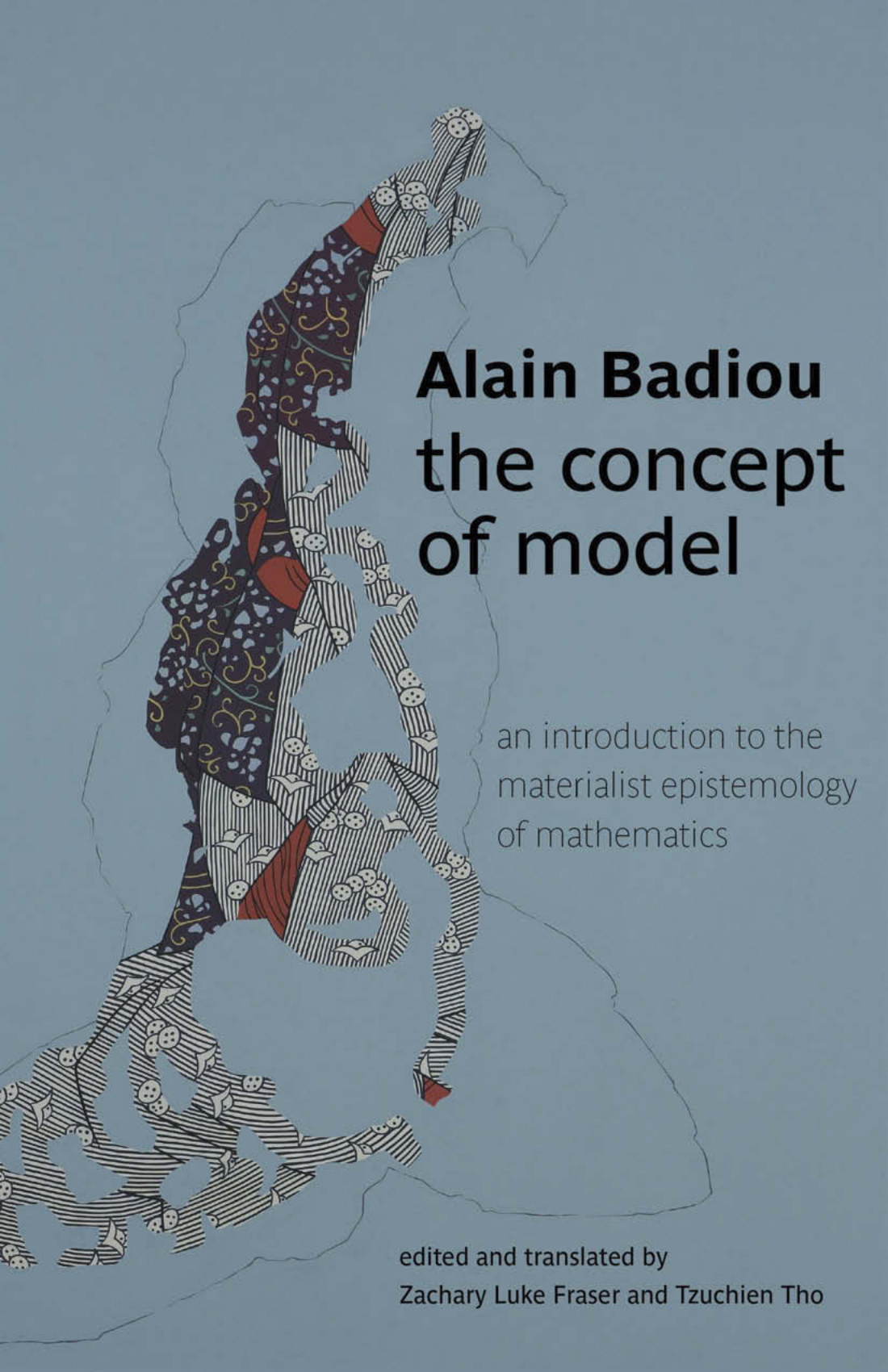Alain Badiou: The Concept of Model. An Introduction to the Materialist Epistemology of Mathematics (1969–)
Filed under book | Tags: · dialectical materialism, epistemology, mathematics, ontology, philosophy

“The Concept of Model is the first of Alain Badiou’s early books to be translated fully into English. With this publication English readers finally have access to a crucial work by one of the world’s greatest living philosophers. Written on the eve of the events of May 1968, The Concept of Model provides a solid mathematical basis for a rationalist materialism. Badiou’s concept of model distinguishes itself from both logical positivism and empiricism by introducing a new form of break into the hitherto implicated realms of science and ideology, and establishing a new way to understand their disjunctive relation. Readers coming to Badiou for the first time will be struck by the clarity and force of his presentation, and the key place that The Concept of Model enjoys in the overall development of Badiou’s thought will enable readers already familiar with his work to discern the lineaments of his later radical developments. This translation is accompanied by a stunning new interview with Badiou in which he elaborates on the connections between his early and most recent thought.”
First published as Le concept de modèle, Maspero, Paris, 1969.
Edited by Zachary L. Frazer and Tzuchien Tho
Publisher Re.press, December 2007
Transmission series
Open Access
ISBN 9780980305234
180 pages
Keywords and phrases
Alain Badiou, ontology, epistemological break, Althusserian, axiom of choice, formal system, Jacques-Alain Miller, model theory, mathematical logic, Michel Serres, ideology, deduction theorem, suture, Justin Clemens, free variable, semantic, logical positivism, mathematical production, Louis Althusser, Dialectical Materialism
PDF (updated on 2023-7-3)
Comments (3)Michele Emmer (ed.): The Visual Mind II (2005)
Filed under book | Tags: · art, data visualisation, geometry, history of mathematics, mathematics

“Mathematical forms rendered visually can give aesthetic pleasure; certain works of art—Max Bill’s Moebius band sculpture, for example—can seem to be mathematics made visible. This collection of essays by artists and mathematicians continues the discussion of the connections between art and mathematics begun in the widely read first volume of The Visual Mind in 1993.
Mathematicians throughout history have created shapes, forms, and relationships, and some of these can be expressed visually. Computer technology allows us to visualize mathematical forms and relationships in new detail using, among other techniques, 3D modeling and animation. The Visual Mind proposes to compare the visual ideas of artists and mathematicians—not to collect abstract thoughts on a general theme, but to allow one point of view to encounter another. The contributors, who include art historian Linda Dalrymple Henderson and filmmaker Peter Greenaway, examine mathematics and aesthetics; geometry and art; mathematics and art; geometry, computer graphics, and art; and visualization and cinema. They discuss such topics as aesthetics for computers, the Guggenheim Museum in Bilbao, cubism and relativity in twentieth-century art, the aesthetic value of optimal geometry, and mathematics and cinema.”
Published by MIT Press, 2005
ISBN 0262050765, 9780262050760
699 pages
PDF (updated on 2013-8-15)
Comment (0)
